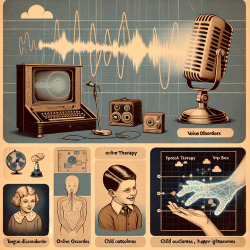The world of neurosurgery is rapidly evolving, with technological advancements paving the way for more precise and effective treatments. One such advancement is the automated identification of white matter fiber tracts, a breakthrough that holds significant promise for neurosurgical planning, especially in patients with brain tumors. This blog post explores how practitioners can leverage these advancements to improve their skills and patient outcomes.
The Challenge of Tractography
Diffusion MRI (dMRI) tractography is a powerful tool used to visualize the brain's white matter tracts. However, traditional methods require expert interpretation and are often time-consuming and inconsistent. The complexity of tractography data, which includes hundreds of thousands of trajectories or "fibers," poses a challenge for standardization across different patients and operators.
A New Approach: Automated Identification
The study titled "Automated white matter fiber tract identification in patients with brain tumors" presents an innovative solution to these challenges. The researchers propose a method that automates the identification of key white matter fiber tracts using a data-driven atlas created from healthy controls. This method employs spectral clustering and groupwise registration to identify patient-specific fiber tracts automatically.
Key Findings
- The data-driven atlas successfully identified 80% of the 800 fiber clusters in all 18 patients studied.
- The arcuate fasciculus (language) and corticospinal tracts (motor) were identified in all patients, demonstrating good colocalization with functional MRI activations.
- This automated method significantly reduces clinical time and increases standardization in presurgical planning.
Implications for Practitioners
For practitioners, integrating this automated approach into clinical practice can lead to several benefits:
- Increased Efficiency: Automation reduces the need for time-intensive manual selection processes, allowing clinicians to focus on patient care.
- Improved Accuracy: The standardized approach minimizes operator-dependent variability, leading to more consistent results across different cases.
- Enhanced Patient Outcomes: By accurately identifying critical brain areas, surgeons can make more informed decisions, potentially increasing tumor resection rates and improving survival outcomes.
Encouraging Further Research
The potential of automated tract identification is vast but requires further exploration. Practitioners are encouraged to delve deeper into this research area to refine techniques and explore new applications in different neurological conditions. Collaboration with research institutions can also foster innovation and accelerate the translation of these findings into everyday clinical practice.
To read the original research paper, please follow this link: Automated white matter fiber tract identification in patients with brain tumors.










